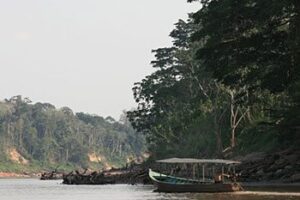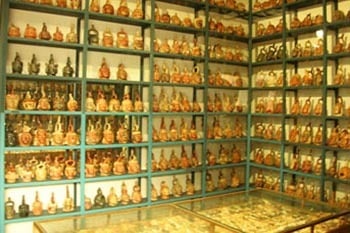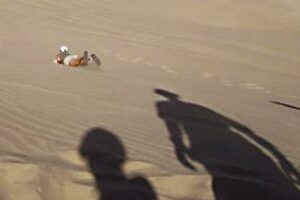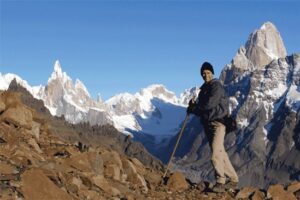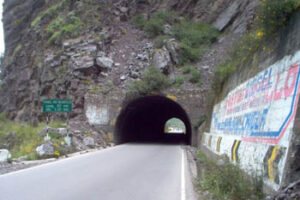Peru: Horsing Around the Other Inca Trail
By Michael Ward
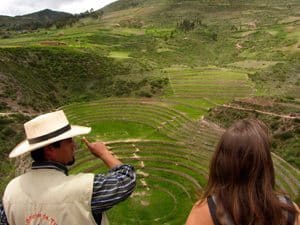
“Where are the horses?” our guide Albizú Segovia asked, a beige hat shading his perpetually youthful face from the Andean sun. “They didn’t follow us,” my girlfriend Katharina and I explained. Albizú looked down at the ground before taking off back up the path alone.
A few minutes later, the thunder of hoofbeats against the dust. Suddenly, we found ourselves in a stampede with the usual Andean suspects: a cow, horse, a laden burro, and a lamb being driven down the trail by a brown skinned cowboy in a sweater vest and baseball cap. They swooped around us and dashed downhill. Then they were gone.
Where’s Albizú? I thought to myself. It was another few minutes before our two horses jumped out of the scrub, a tired Albizú behind them. He shook his head. “Horses…”
When I first pitched the idea to my girlfriend about horseback riding in the Peruvian backcountry, I really had her in mind. She grew up with horses, riding them weekly throughout much of her childhood. I didn’t. And although my total time in the saddle prior to South America added up to less than the hang time of an Aggie punt, as a Texan, I figured I had a somewhat natural advantage. Now, after about an hour atop the caramel colored Izuri (whose name means “sun” in Quechua), my Texan butt could feel ice in its future.
Yeoman Farmers
“Those are some of the plants my family has been trying to bring back to the land,” Albizú said as he pointed across sweeping green hills filled with sprouting vegetables and the tiny dots of yeomen farmers hard at work in the fields. Albizú’s family has been trying to bring back native species for years. And so far, they’ve had some success.
The magical Andes were just beyond the hills, shrouded in a thick, beautiful mist that occasionally revealed the glaciers resting near the summits. We made our way across a small gulch and then scrambled up the a rocky stretch before arriving at our first destination, the archaeological site known as Moray. We dismounted near an old barbed wire fence and let the horse gnaw at the lush grass.
Albizú took us over to the rim of the site, where I looked down to find the most alien looking ruins I’d ever seen. Hundreds of feet below us, six gigantic concentric circles of terraces–each about six feet deeper than the next–engulfed our view. Another set of pear shaped terraces surrounded the inner circles. If looked more like the stuff of 2:00am cable TV conspiracy shows.

“The Inca,” Albizú told us, “used this as a place to research crops.” In fact, although archaeologists remain uncertain as to what exactly the Incas used this area for, the temperature difference between the lowest terrace and the highest terrace can be as much as 20-30 degrees Fahrenheit. The evidence found so far is consistent with crop research.
We made our way to the middle terrace, hopping down ancient Incan stairways made of nothing more than protruding stones from the walls of each terrace. With each step, the air grew warmer, our breathing quicker.
Now, standing in the middle of these ancient ruins, it was not hard to imagine how 500 years before, corn and other vegetables would have been sprouting around us as perhaps dozens of Incan scientists wandered the terraces studying crop production to better feed their families. It’s not so far off from what we do today.
After a much needed rest from the horses, we were back in the saddle and moving across those same sloping hills from earlier. In the quietness of the backcountry, the light breeze rattled the corn and made it sound like rain, and the clouds that engulfed the Andes to our left looked like rain. But it never rained.
Time for a Picnic
We made our way to the picnic site and had a few minutes to explore the green patch on foot while Albizú prepared our picnic. At 11,000 feet, sound can travel incredibly far compared to sea level. My girlfriend and I watched and listened to a family, perhaps half a mile away, as they worked the earth with nothing more than a couple oxen and a metal plow, chatting in Incan Quechua.
Then Albizú called us back to the site where he presented us with some food traditional to the area: cauliflower, carrots, and green beans in a vinaigrette, some baked yucca, and peach juice. He poured each of us a glass and we toasted the beautiful day and the trip so far. Then he poured about an ounce onto the ground next to our blanket. “We do this for Pachamama.” The traditional mother earth figure of Inca mythology. So we each poured a little bit onto the ground before sitting down to eat.
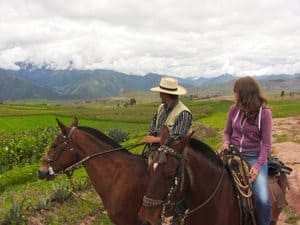
Albizú has dreams. His family has been in the horse business for years, raising Peruvian Pasos. Now he dreams of building a few cabins on some land just across from our picnic site. It’s a small hill that faces the Andes. He wants to bring some tourists out here to experience his culture and life on a Peruvian ranch. “Do you think people would come out here?” He asked us. We both nod quickly and explain that people would love to come here.
The landscape is simply breathtaking between the 20,000+ peaks that are almost close enough to touch, the verdant hills that provide panoramas at nearly every turn. Yes, Albizú. People would come.
The Village of Maras
We packed up our food and began to head to the small village of Maras. It was the last of the colonial towns in the area. And although much of the town seems in ruins, clues to its once coveted colonial status are still evident.
We meandered through the streets and passed by two doorways that Albizú asked us to look at. At first they looked like common stones. But as we looked closer, they were reliefs of knights and lions. These, Albizú tells us, are mark what were once the homes of the city’s colonial elite. Now, peeking through the cracks of the door, we could see that they was nothing but rumble and vacant land behind it. In this world, only the Andes remain untouched by time.
We left the horses with Albizú’s horseman in the town and took a taxi to our second and final Inca site, the salt mines of Maras. Here, etched into a gulch, we found hundreds of squares of white, ochre, and yellow.
“Taste this,” Albizú said, leaning down to dip his hands into a small stream of water flowing down from the mountain. I reached in and brought the water to my lips. My eyes widened and my lips puckered from the enormous salt content. Albizú laughed.The squares we were looking at were designed my the Inca to catch the salt water that flowed off the mountain. The Incas would cut the water off once each pool was filled and then let the water evaporate, leaving the much desired salt behind. Their descendants still practice the the same salt mining today, bringing in a hundred dollars or more every few months to those who are willing to work the pools.

As we waited by the bus stop to head back to Cusco, Albizú told me the secret to the allure of Peru. “We are multilingual, multiethnic, and megadiverse,” he said. Aside from Spanish and Quechua, dozens of other languages are spoken natively throughout the country, many of which have their own cultural and ethnic components.
And of course, he reminded us, the geography of Peru is like three stripes of brown, grey, and green. Peru is filled with deserts, mountains, and rain forests. With all this diversity, whenever one travels through Peru, one is met with a different climate, geography, and most probably a different set of customs. There are, in effect, many Perus in one.
Back to Cusco
We headed back to Cusco, one of the world’s busiest tourist hubs. Every day backpackers are setting off from here to Inca Trail or directly to Machu Picchu. But as we got back to the central plaza, in the shadow of the Cathedral de Santo Domingo built atop a Incan palace, Katharine and I realized that we had seen another Inca trail, a trip that took us to places few knew about and even fewer were able to reach.
And then I figured it was about time for that ice.
Prices and Safety
Tourism and prices for nearly everything are higher in June, July, and August. We paid $80 per person (all inclusive) for one full day in February. Other packages include 2-5 days of riding. Safety atop a horse as well as in the backcountry is always important to consider. With well trained horses like these and a local guide, we were never concerned for a moment. More information is available at: www.apupachahorses.com.
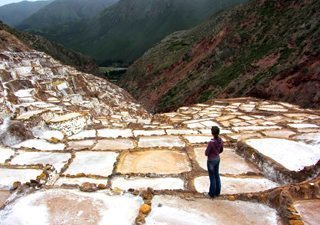
How to Get There
American Airlines and LAN (based out of Chile) have flights to Cusco from $800-$1,300, depending on the season. Other major carriers will fly to Lima, where you can find hourly flights to Cusco (about 1-hour flight time).
What to Bring
Riding experience isn’t necessary. However, water, sunscreen, sunglasses, and a hat are. At 11,000 feet, even a cloudy day can give you a sunburn. Pants are a must and a light colored long- sleeve shirt will keep you warm enough at that altitude in the summer months. During the South American winter (June, July, August), bring a heavier coat.
 Michael Ward is a freelance writer based in Texas.Visit his website.
Michael Ward is a freelance writer based in Texas.Visit his website.
- Missouri Sports Travel Adventure: From Landmarks to Ballparks - January 21, 2026
- What First-Time Visitors Get Wrong About Visiting Iceland - January 15, 2026
- Bareboat Charter vs all-inclusive Crewed: Which Luxury Charter Fits You? - December 29, 2025


